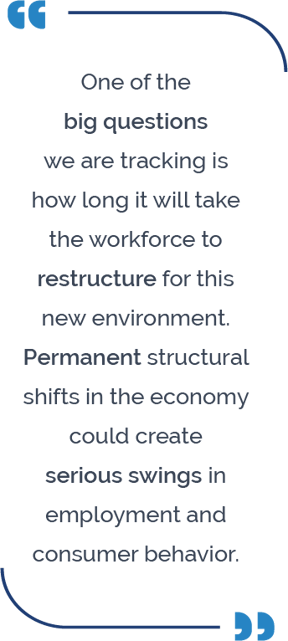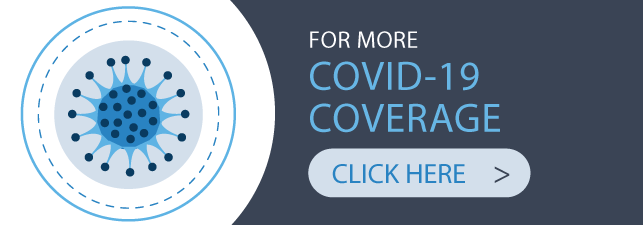You’ve used a 5-point framework to talk about the virus. Where are we now?
We’re still in the fifth stage of our framework—stimulus. Governments around the world are doubling down on stimulus efforts and funding new fiscal packages to support their economies. Central banks have acted aggressively to help keep the capital markets liquid and functioning. One question now is: when will we break out of the stimulus phase? To us, it comes down to a vaccine. We feel confident that there will be a successful vaccine at some point; it’s harder to anticipate what the execution will look like. We think it’s going to take a widespread, efficient vaccination program to get people to start living their normal lives and for economic activity to recover. We expect obstacles before a vaccine is broadly available—for example, surges in cases associated with economic reopening or a potential second wave of the virus later this year. Governments now appear to have a better road map to deal with these challenges, and we are hopeful that they will follow it.
What aspects of the economic recovery are you focused on?

We are focusing on the consumer and employment. Job and income numbers will be important to watch as we head into the fall. For the first part of the summer, it seemed like the economy was starting to open back up, employment numbers bounced, and some normalcy was returning. That was encouraging. More recently, we’ve seen a lot of news about layoffs, underemployment, worker shortages and businesses closing. How will these trends play out for the US workforce? Will there be a major wave of reshutdowns? Will schools reopen in a way that allows more people to return to work? Nearer term, there’s a lot riding on the timing of a vaccine and a sustained economic recovery. Longer term, one of the big questions we are tracking is how long it will take the workforce to restructure for this new environment. Permanent structural shifts in the economy could create serious swings in employment and consumer behavior.
With so much uncertainty, how are you investing in your portfolios?
This environment is challenging, but the effects on companies are not one-size-fits-all. Our approach has been to pay attention to each company’s business drivers, balance sheet, financial flexibility and executive management team. In today’s environment, we are also layering virus and geopolitical scenarios on top of our typical deep fundamental research. We think bouts of volatility are going to continue, so there is potential for investors to draw on their research and knowledge of individual businesses and identify credits backed by strong fundamentals. We are looking closely for value in the crossover space between investment grade and high yield. Uncertainty is never easy to take, but we wait for markets like these to put our research to work.

MALR025805
Market conditions are extremely fluid and change frequently.
This blog post is provided for informational purposes only and should not be construed as investment advice. Any opinions or forecasts contained herein reflect the
subjective judgments and assumptions of the authors only and do not necessarily reflect the views of Loomis, Sayles & Company, L.P. Information, including
that obtained from outside sources, is believed to be correct, but Loomis Sayles cannot guarantee its accuracy. This material cannot be copied, reproduced or
redistributed without authorization. This information is subject to change at any time without notice.





